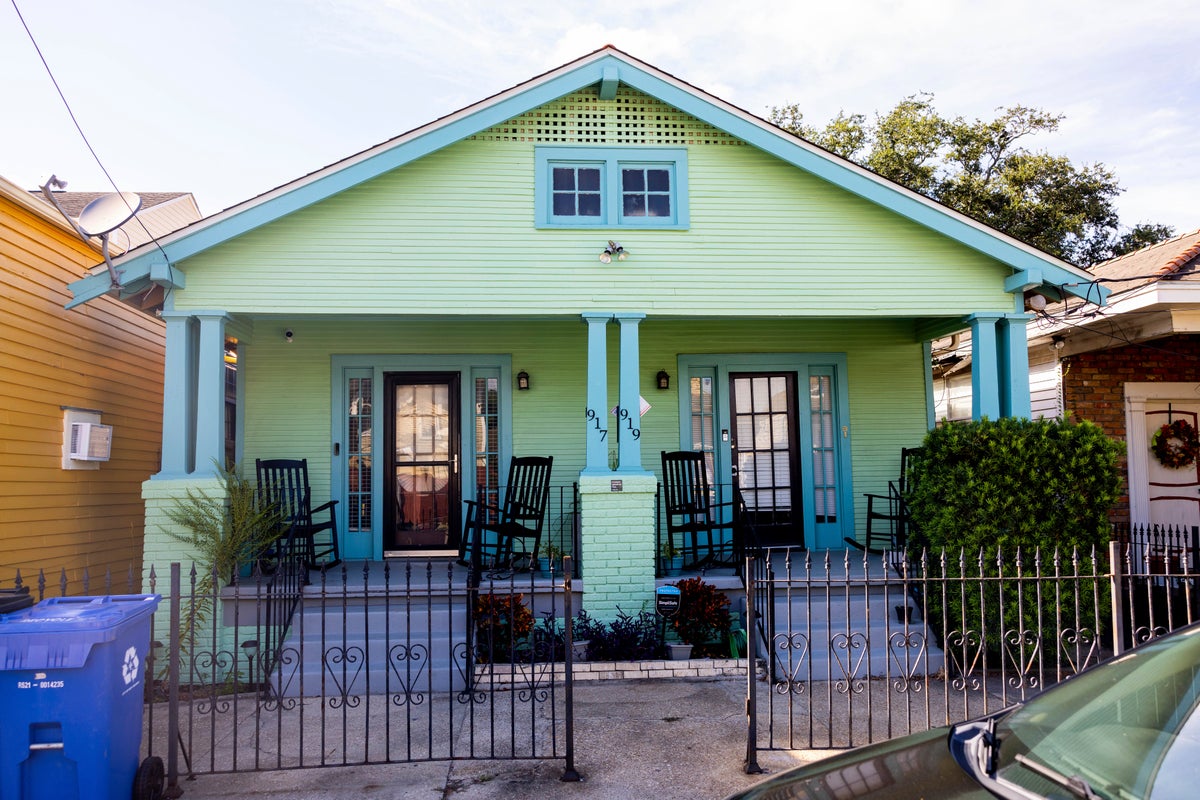
The New Orleans home where civil rights activist Oretha Castle Haley grew up and that served as a hub for Louisiana's civil rights movement in the 1960s has been added to the National Register of Historic Places.
The Treme neighborhood Craftsman-style home at 917-919 N. Tonti Street, which Haley shared with her parents and sister, Doris, is listed on the National Register as the “Castle Family Home” and later became known as the Freedom House, serving as a backdrop for pivotal moments in the city’s civil rights history.
Haley participated in numerous protests, demonstrations and sit-ins fighting for racial equality. She notably challenged the segregation of facilities and lunch counters in New Orleans and promoted Black voter registration throughout Louisiana. She died in 1987 of ovarian cancer. In 1989, the city honored her memory by renaming Dryades Street, the site of many civil rights demonstrations, Oretha Castle Haley Boulevard.
The now-bright green-painted home with blue trim was headquarters for the New Orleans chapter of the Congress of Racial Equality and used as a meeting place and organizational center for planning sit-ins and boycotts against segregated businesses. It was also a safe house where participants in the 1961 Freedom Rides that challenged segregated public buses could get a meal or a place to sleep.
Robin S. Smith, a graduate student studying historic preservation at Tulane University's School of Architecture, started the historic designation process.
“Once you learn the history of this house, it’s impossible to ignore,” said Smith, a litigation attorney who was inspired to make a career change after visiting New Orleans and learning about Tulane’s Master of Science in Historic Preservation Program.
In August, she gave a detailed presentation before the Review Committee of the Louisiana Division of Historic Preservation. The nomination was approved at the state level and then by the National Register office of the National Park Service in October.
“My primary concern in this entire process was that I do justice to the history of this place,” Smith said. “I knew that if I could just do that, that the nomination would be accepted.”
For a property to qualify for the National Register, it must be at least 50 years old, retain sufficient architectural integrity to convey its historic period and have potential to yield important information. The house remains largely unchanged from the 1950s and ’60s, providing an immersive portal back to the civil rights era.
Properties listed in the National Register, authorized by the National Historic Preservation Act of 1966, are deemed worthy of preservation for their exceptional historic value. The designation also assists efforts to save sites from demolition and makes them eligible for government preservation grants and tax incentives.
Smith said national recognition raises awareness of what she described as a “historic gem” and preserves its place in history.
“The primary driver of this nomination was the desire to have the importance of this place and its role in history shared and recognized,” she said. “For me it was absolutely a privilege to be trusted with this story, and it was truly a labor of love.”







